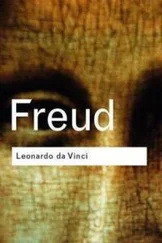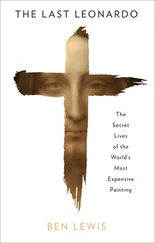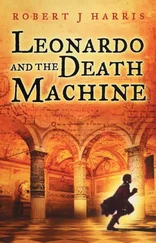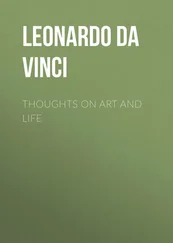Leonardo da Vinci - The Notebooks of Leonardo Da Vinci. Complete
Здесь есть возможность читать онлайн «Leonardo da Vinci - The Notebooks of Leonardo Da Vinci. Complete» — ознакомительный отрывок электронной книги совершенно бесплатно, а после прочтения отрывка купить полную версию. В некоторых случаях можно слушать аудио, скачать через торрент в формате fb2 и присутствует краткое содержание. Жанр: foreign_prose, foreign_home, visual_arts, foreign_antique, на английском языке. Описание произведения, (предисловие) а так же отзывы посетителей доступны на портале библиотеки ЛибКат.
- Название:The Notebooks of Leonardo Da Vinci. Complete
- Автор:
- Жанр:
- Год:неизвестен
- ISBN:нет данных
- Рейтинг книги:3 / 5. Голосов: 1
-
Избранное:Добавить в избранное
- Отзывы:
-
Ваша оценка:
- 60
- 1
- 2
- 3
- 4
- 5
The Notebooks of Leonardo Da Vinci. Complete: краткое содержание, описание и аннотация
Предлагаем к чтению аннотацию, описание, краткое содержание или предисловие (зависит от того, что написал сам автор книги «The Notebooks of Leonardo Da Vinci. Complete»). Если вы не нашли необходимую информацию о книге — напишите в комментариях, мы постараемся отыскать её.
The Notebooks of Leonardo Da Vinci. Complete — читать онлайн ознакомительный отрывок
Ниже представлен текст книги, разбитый по страницам. Система сохранения места последней прочитанной страницы, позволяет с удобством читать онлайн бесплатно книгу «The Notebooks of Leonardo Da Vinci. Complete», без необходимости каждый раз заново искать на чём Вы остановились. Поставьте закладку, и сможете в любой момент перейти на страницу, на которой закончили чтение.
Интервал:
Закладка:
131
THE RAYS WHETHER SHADED OR LUMINOUS HAVE GREATER STRENGTH AND EFFECT AT THEIR POINTS THAN AT THEIR SIDES.
Although the points of luminous pyramids may extend into shaded places and those of pyramids of shadow into illuminated places, and though among the luminous pyramids one may start from a broader base than another; nevertheless, if by reason of their various length these luminous pyramids acquire angles of equal size their light will be equal; and the case will be the same with the pyramids of shadow; as may be seen in the intersected pyramids a b c and d e f , which though their bases differ in size are equal as to breadth and light.
[Footnote: 51—55: This supplementary paragraph is indicated as being a continuation of line 45, by two small crosses.]
The difference between light and lustre (132—135).
132
Of the difference between light and lustre; and that lustre is not included among colours, but is saturation of whiteness, and derived from the surface of wet bodies; light partakes of the colour of the object which reflects it (to the eye) as gold or silver or the like.
133
OF THE HIGHEST LIGHTS WHICH TURN AND MOVE AS THE EYE MOVES WHICH SEES THE OBJECT.
Suppose the body to be the round object figured here and let the light be at the point a , and let the illuminated side of the object be b c and the eye at the point d : I say that, as lustre is every where and complete in each part, if you stand at the point d the lustre will appear at c , and in proportion as the eye moves from d to a , the lustre will move from c to n .
134
OF PAINTING.
Heigh light or lustre on any object is not situated [necessarily] in the middle of an illuminated object, but moves as and where the eye moves in looking at it.
135
OF LIGHT AND LUSTRE.
What is the difference between light and the lustre which is seen on the polished surface of opaque bodies?
The lights which are produced from the polished surface of opaque bodies will be stationary on stationary objects even if the eye on which they strike moves. But reflected lights will, on those same objects, appear in as many different places on the surface as different positions are taken by the eye.
WHAT BODIES HAVE LIGHT UPON THEM WITHOUT LUSTRE?
Opaque bodies which have a hard and rough surface never display any lustre in any portion of the side on which the light falls.
WHAT BODIES WILL DISPLAY LUSTRE BUT NOT LOOK ILLUMINATED?
Those bodies which are opaque and hard with a hard surface reflect light [lustre] from every spot on the illuminated side which is in a position to receive light at the same angle of incidence as they occupy with regard to the eye; but, as the surface mirrors all the surrounding objects, the illuminated [body] is not recognisable in these portions of the illuminated body.
136
The relations of luminous to illuminated bodies.
The middle of the light and shade on an object in light and shade is opposite to the middle of the primary light. All light and shadow expresses itself in pyramidal lines. The middle of the shadow on any object must necessarily be opposite the middle of its light, with a direct line passing through the centre of the body. The middle of the light will be at a , that of the shadow at b . [Again, in bodies shown in light and shade the middle of each must coincide with the centre of the body, and a straight line will pass through both and through that centre.]
[Footnote: In the original MS., at the spot marked a of the first diagram Leonardo wrote primitiuo , and at the spot marked c — primitiva (primary); at the spot marked b he wrote dirivatiuo and at d deriuatiua (derived).]
Experiments on the relation of light and shadow within a room (137—140).
137
SHOWS HOW LIGHT FROM ANY SIDE CONVERGES TO ONE POINT.
Although the balls a b c are lighted from one window, nevertheless, if you follow the lines of their shadows you will see they intersect at a point forming the angle n .
[Footnote: The diagram belonging to this passage is slightly sketched on Pl. XXXII; a square with three balls below it. The first three lines of the text belonging to it are written above the sketch and the six others below it.]
138
Every shadow cast by a body has a central line directed to a single point produced by the intersection of luminous lines in the middle of the opening and thickness of the window. The proposition stated above, is plainly seen by experiment. Thus if you draw a place with a window looking northwards, and let this be s f , you will see a line starting from the horizon to the east, which, touching the 2 angles of the window o f , reaches d ; and from the horizon on the west another line, touching the other 2 angles r s , and ending at c ; and their intersection falls exactly in the middle of the opening and thickness of the window. Again, you can still better confirm this proof by placing two sticks, as shown at g h ; and you will see the line drawn from the centre of the shadow directed to the centre m and prolonged to the horizon n f .
[Footnote: B here stands for cerchio del' orizonte tramontano on the original diagram (the circle of the horizon towards the North); A for levante (East) and C for ponete (West).]
139
Every shadow with all its variations, which becomes larger as its distance from the object is greater, has its external lines intersecting in the middle, between the light and the object. This proposition is very evident and is confirmed by experience. For, if a b is a window without any object interposed, the luminous atmosphere to the right hand at a is seen to the left at d . And the atmosphere at the left illuminates on the right at c , and the lines intersect at the point m .
[Footnote: A here stands for levante (East), B for ponente (West).]
140
Every body in light and shade is situated between 2 pyramids one dark and the other luminous, one is visible the other is not. But this only happens when the light enters by a window. Supposing a b to be the window and r the body in light and shade, the light to the right hand z will pass the object to the left and go on to p ; the light to the left at k will pass to the right of the object at i and go on to m and the two lines will intersect at c and form a pyramid. Then again a b falls on the shaded body at i g and forms a pyramid f i g . f will be dark because the light a b can never fall there; i g c will be illuminated because the light falls upon it.
Light and shadow with regard to the position of the eye (141—145).
141
Every shaded body that is larger than the pupil and that interposes between the luminous body and the eye will be seen dark.
When the eye is placed between the luminous body and the objects illuminated by it, these objects will be seen without any shadow.
[Footnote: The diagram which in the original stands above line 1 is given on Plate II, No 2. Then, after a blank space of about eight lines, the diagram Plate II No 3 is placed in the original. There is no explanation of it beyond the one line written under it.]
Читать дальшеИнтервал:
Закладка:
Похожие книги на «The Notebooks of Leonardo Da Vinci. Complete»
Представляем Вашему вниманию похожие книги на «The Notebooks of Leonardo Da Vinci. Complete» списком для выбора. Мы отобрали схожую по названию и смыслу литературу в надежде предоставить читателям больше вариантов отыскать новые, интересные, ещё непрочитанные произведения.
Обсуждение, отзывы о книге «The Notebooks of Leonardo Da Vinci. Complete» и просто собственные мнения читателей. Оставьте ваши комментарии, напишите, что Вы думаете о произведении, его смысле или главных героях. Укажите что конкретно понравилось, а что нет, и почему Вы так считаете.












